The USS Cassin Young (DD-793), a Fletcher-class destroyer of the U.S. Navy, is preserved today as a memorial ship, berthed at Boston Navy Yard in Massachusetts, across from the old warship USS Constitution. Visiting this ship seemed like an afterthought before or after seeing the USS Constitution and this ship doesn’t have the historical weight “Old Ironsides.” Still, it had a storied World War II history and it was fun to walk around the well-maintained US Navy destroyer as they have lots of rooms open on the main deck to look in or walk around in. Cassin Young served in World War II (participating in the Battle of Leyte Gulf and the Battle of Okinawa), was decommissioned, but was reactivated during the Korean War and continued in active service until 1960.
Check out “USS Constitution – Old Ironsides“
Here are some interesting trivia regarding the ship:
- USS Cassin Young engaged in seven Pacific battles in World War II, survived two Kamikaze hits, and served another full decade beyond her expected lifetime.
- Cassin Young was the last ship hit by Kamikazes in the vicinity of Okinawa.
- It was named after Captain Cassin Young (1894–1942), who was awarded the Congressional Medal of Honor for his heroism at the Japanese attack on Pearl Harbor and who was killed in the Naval Battle of Guadalcanal in the fall of 1942.
- She is one of only four surviving Fletcher-class destroyers (the most numerous class of destroyer produced by the United States during World War II) still afloat. The others are the USS The Sullivans (DD-537)in Buffalo, New York; the USS Kidd (DD-661) at Baton Rouge, Louisiana; and the Greek destroyer Velos (D16), former USS Charrette (DD-581), at Athens, Greece.
- The ship is maintained and operated by the National Park Service and Cassin Young Volunteers.
- She was listed on the National Register of Historic Places and designated a National Historic Landmark in 1986, as a well-preserved example of the Fletcher-class destroyer.
Here’s the historical timeline of the ship:
- On March 18 1943, the keel of the Cassin Young was laid down byBethlehem Steel, San Pedro, California.
- On September 12, 1943, the Cassin Young was launched.
- Sponsored by Mrs. Eleanor Young (widow of her namesake); she was commissioned on December 31, 1943 with Commander T. Schrieber in command.
- On March 19, 1944, Cassin Young arrived at Pearl Harbor to complete her training before sailing on to Manus, where she joined the massive Fast Carrier Task Force (then called TF 58, at other times called TF 38, depending on whether the overall organization was called 5th Fleet or 3rd Fleet).
- On April, 28, 1944, TF 58 sortied for air attacks on Japanese strongholds at Truk, Woleai, Satawan and Ponape in the Caroline Islands, during which Cassin Young operated as a picket ship, assigned to warn her group of possible enemy counterattack. She returned to Majuro, and then Pearl Harbor for further training.
- On June 11, 1944, Cassin Young reported to Eniwetok to join the screen of escort carriers assigned to covering duty in the invasion of Saipan four days later. In addition to radar picket and screening duty, she was also called upon for inshore fire support. As the battle for Saipan raged ashore, escort carriers of Cassin Young‘s group launched attacks on the island, as well as sorties to neutralize enemy air fields on Tinian, Rota, and Guam. Similar operations supporting the subsequent assaults on Tinian and Guam claimed the services of Cassin Young.
- On August, 13, 1944, she returned to Eniwetok to replenish.
- On August 29, 1944, Cassin Young guards the carriers of Task Group 38.3, which included several aircraft carriers, as strikes were flown from their decks to hit targets on Palau, Mindanao, and Luzon in support of the assault on the Palaus, stepping-stone to the Philippines.
- On October 2, 1944, she returns to Ulithi, Caroline Islands
- On October 6, 1944, Cassin Young sails with the same force on duty in the accelerated schedule for the Philippines assault. First on the schedule were air strikes on Okinawa, Luzon, and Formosa.
- From October 10 to 13, 1944, during the furious Formosa Air Battle, the Japanese tried to destroy the carrier strength of the imposing TF 38.
- On October, 14, 1944, the cruiser Reno was struck by a Kamikaze, wounding five of Cassin Young‘s men with machine gun fire. During this attack, Cassin Young aided in shooting down several aircraft.
- On October 18, 1944, TF 38 took position east of Luzon to launch strikes immobilizing enemy air fields there in preparation for the assault on Leyte two days later.
- On October 23, 1944, after standing by to render support if called upon during the initial landings, Cassin Young‘s group began to search for the enemy forces known to be moving toward Leyte Gulf
- On October, 24, 1944,during the most vigorous and successful air attack mounted by the Japanese during the Leyte operation, Cassin Young moved in toward San Bernardino Strait, ready to launch strikes. At 09:38, an enemy bomb struck the aircraft carrier Princeton, and Cassin Young rescued over 120 men from the carrier before that ship sank, then rejoined TG 38.3 for the dash northward to attack the Japanese Northern Force.
- On October 25, 1944, a series of air strikes during the Battle off Cape Engaño resulted in the sinking of four Japanese carriers and a destroyer. As her carriers continued to range widely, striking at enemy bases on Okinawa, Formosa, and Luzon, Cassin Young continued operations in support of the Leyte conquest.
- On October 31, 1944, Cmdr. John Ailes III takes over command of the Cassin Young.
- Through January 1945, with Ulithi as her base, the destroyer screened carriers as their aircraft pounded away at Formosa, Luzon, Cam Ranh Bay (Vietnam), Hong Kong, Canton and the Nansei Shoto in their support for the assault on Luzon.
- After a brief overhaul at Ulithi, Cassin Young joined operations supporting the invasion of Iwo Jima with air strikes on Honshū and Okinawa, the bombardment of Parece Vela, and screening off Iwo Jima itself in support of Marine operations during the initial assault on February 19, 1945.
- On March 22, 1945, after another brief respite at Ulithi, she sailed for her deployment for the Okinawa operation. After screening heavy ships in the massive pre-invasion bombardment, Cassin Young helped “soften up” Okinawa for the upcoming assault on that island, and moving inshore to support the activities of underwater demolition teams preparing the beaches.
- On April 1, 1945, the destroyer escorted assault craft to the beaches, providing shore bombardment in the assault areas, then took up radar picket duty, providing early warning of impending air attacks to the main fleet, possibly the most hazardous duty performed by any warship during World War II. In the weeks and months ahead, the ships assigned to the 15 picket stations bore the brunt of over 1,500 Kamikaze attacks which the Japanese gambled on in defeating the Okinawa operation. Radar Picket (RP) Stations 1,2 and 3 faced the worst of these attacks.
- On April, 6, 1945, Cassin Young, on duty at RP Station 3, endured her first Kamikaze attacks as the Japanese launched the first of 10 massed attacks, sending 355 Kamikazes and 341 bombers towards Okinawa. The ship downed three “bogeys” (enemy planes) and picked up survivors from the nearby destroyers assigned to RP Stations 1 and 2 (both were hit and sunk by Kamikazes).
- On April, 12, 1945, a massive wave of Kamikazes came in at midday. Cassin Young was then assigned to RP Station 1. Her accurate gunfire had aided in shooting down 5 aircraft, but a sixth crashed high-up into her foremast, exploding in midair only 15 m. (50 ft.) from the ship. Surprisingly only one man was killed but 58 were wounded, many of them seriously. Cassin Young, although damaged, made Kerama Retto under her own power.
- On May, 31, 1945, after repairs at Kerama Retto and at Ulithi, she returned to Okinawa and resumed radar picket duty.
- As the Kamikaze attacks continued, Cassin Young had respite only during two brief convoy escort voyages to the Marianas.
- On July, 28, 1945, her group was again a prime target for the Japanese, with one destroyer sunk and another badly damaged by Kamikazes. During the engagement, Cassin Young assisted in shooting down two enemy aircraft, then rescued 125 survivors from the sunken USS Callaghan.
- At 3:26 AM on July 29, 1945, just 16 days before Japan surrendered, Cassin Young was struck for the second time, when a low-flying aircraft hit her starboard side of the main deck, near the forward smoke stack, striking her fire control room. A tremendous explosion amidships was followed by fire and the ship lay dead in the water. However, the crew managed contained the damage, restore power to one engine, get the flames under control, and had the ship underway for the safety of Kerama Retto within 20 minutes. Casualties were 22 men dead and 45 wounded. For her determined service and gallantry in the Okinawa radar picket line she was awarded the Navy Unit Commendation.
- On August 8, 1945, Cassin Young cleared Okinawa and headed home for repairs. Arriving home in San Pedro, California, she was fully repaired.
- On August 29, 1945, Lt.-Cmdr. Carl Pfeifer takes over command of the ship.
- On May 28, 1946, she was decommissioned and placed the reserve or “mothball” fleet in San Diego.
- On September 8, 1951, with the outbreak of the Korean Conflict, many destroyers were recalled to service and Cassin Young was recommissioned at Long Beach Naval Shipyard.
- On January 4, 1952, she cleared San Diego for her new home port, Newport, Rhode Island.
- In September 1952 she entered Dry Dock #1 in the Charlestown Facility, Boston Navy Yard (beginning her association with this navy yard) for the first of four major overhauls she would undergo in this shipyard. At this time the ship was updated to its current configuration. Two Hedgehog anti-submarine warfare (ASW) launchers and two torpedo carriages for the Mark 32 torpedo were added, with one 21 inch (533 mm.) quintuple torpedo tube mount removed. Also, four 40 mm. Bofors twin mounts were replaced by two quadruple mounts. The forward pole mast was replaced by a tripod mast to accommodate improved radar and electronics systems.
- On November 21, 1952, Cmdr. Thomas Rudden, Jr. takes over command of the Cassin Young.
- From May 7 to June 12, 1953, local operations and refresher training in the Caribbean preceded a period of antisubmarine exercises off Florida.
- From September 16 to November 30, 1953, she had her first tour of duty with the 6th Fleet, initially serving in Atlantic and Mediterranean waters.
- On May 3, 1954, after another period of local operations and exercises in the Caribbean Sea early in 1954, she cleared Newport for a round-the-world cruise, which included exercises with the 7th Fleet in the western Pacific, patrols off Korea, and good-will visits to Far Eastern and Mediterranean ports.
- On November 28, 1954, she returned to Newport.
- On August 17, 1956, Cmdr. Clifton Cates, Jr. takes over command of the Cassin Young.
- On September 14, 1958, Cmdr. John Hooper takes over as commanding officer of the ship.
- In 1959, Cassin Young was awarded the Battle Efficiency “E” for overall excellent performances in all exercises that year.
- From 1954 until 1960, her operations included training exercises in the Caribbean and off the eastern Atlantic seaboard as well as four tours of duty in the Mediterranean in 1956, winter 1956-57, and 1959, and a round of visits to ports of northern Europe in 1958. During those years, the ship returned to the Boston Naval Shipyard five more times for overhauls to keep ahead of the unavoidable problem of old age.
- On February 6, 1960, she arrived at Norfolk Naval Shipyard to be decommissioned because, during that last overseas deployment, an issue was discovered with her rudder that put her into dry dock in France. At that point the repair costs outweighed retaining the aging ship.
- On April 29, 1960, Cassin Young was put into long-term storage at the PhiladelphiaNaval Inactive Ship Maintenance Facility.
- On December 1, 1974, she was struck from the Naval Vessel Register. The US Navy has permanently loaned Cassin Young to the National Park Service, to be preserved as a floating memorial ship berthed at the Boston Navy Yard, part of the Boston National Historical Park (BNHP) in Boston, Massachusetts.
- On June 15, 1978, Cassin Young arrived at Boston Navy Yard
- In 1981, Cassin Young was opened to the public.
- In 1986, she was designated as a National Historic Landmark
- In late July 2010, Cassin Young closed to the public in preparation for dry-docking.
- On August 9, 2010, she was moved into Historic Dry Dock #1 in BNHP for the first time in 30 years for some much needed repairs to her hull.
- On September 4, 2012, the ship was closed to the public to allow contractors to make final repairs to the hull.
- On May 14, 2013, she returned to her position at Pier 1.
- On June 4, 2013, she was moved to the Boston Harbor Shipyard and Marina in East Boston while repairs were made to her berth in Charlestown.
- By September 2013, she had returned to her museum berth.
Here are some specifications of this ship:
- Displacement :2,050 tons (2,924 full)
- Length: 114.7 m. (376.4 ft.)
- Beam: 12.1 m. (39.6 ft.)
- Draft: 4.2 m. (13.8 ft.)
- Propulsion: 4 oil-fired boilers, 2 General Electric gearedsteam turbines, 2 shafts, 45,000 kW (60,000 shp)
- Speed: 67.6 kms./hr. (36.5 knots, 42.0 mph)
- Range: 12,000 kms. (6,500 nautical miles); 7,500 mile at 15 knots (28 kms/hr.; 17 mph)
- Complement: 325
- Armament (as built): 5 x 5 in (127 mm)/38 caliber guns, 5 x twin 40 mm AA guns, 7 x 20 mm AA guns, 2 x quintuple 21 inch (533 mm) torpedo tubes, 6 x K-gun depth charge throwers, 2 x depth charge tracks
- Armanent (as preserved): 5 x 5 in (127 mm)/38 caliber guns, 2 x quad 40 mm AA guns, 1 x twin 40 mm AA guns, 1 x quintuple 21 in (533 mm) torpedo tubes, 2 x torpedo carriages for the Mark 32 torpedo, 2 x Hedgehog ASW mortar, 1 x depth charge track
USS Cassin Young: 198 3rd St., Pier 1, Charlestown Navy Yard, Boston, Massachusetts 02129. Tel: (617) 242-5601. Admission is free. Free 45-min. guided tours, by a Park Ranger, takes you to the galleys, mess, officers’ quarters, engine room, gun/battery, captain’s cabin, the bridge and the crew quarters, all parts of the ship not accessible without a guide.

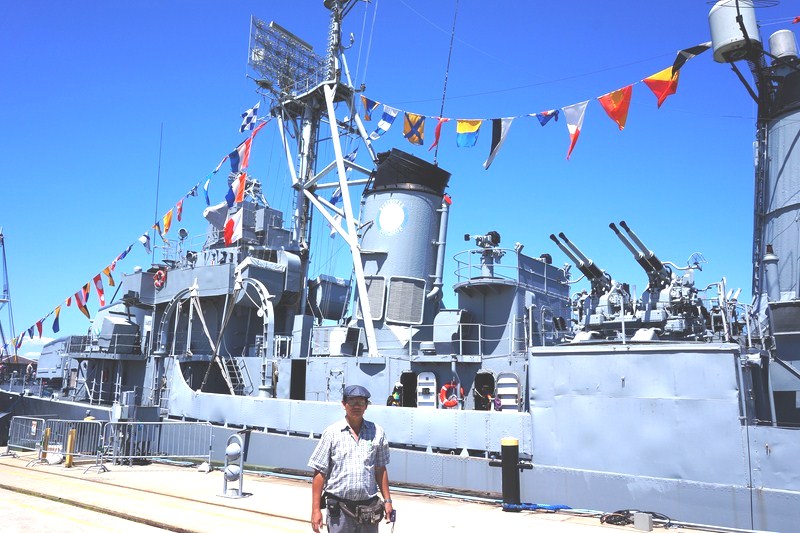
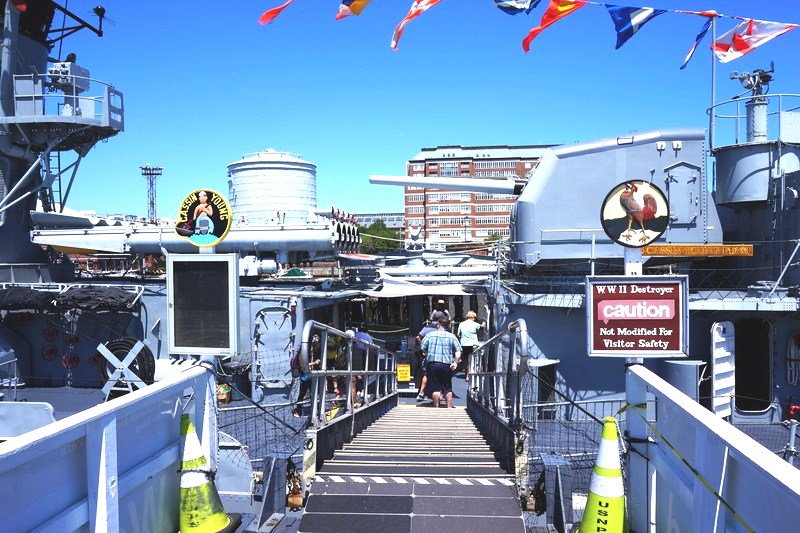

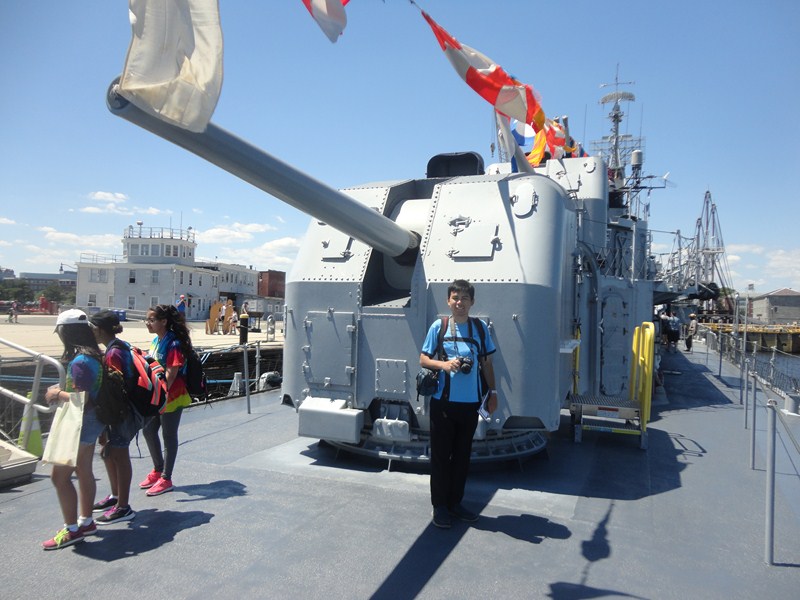
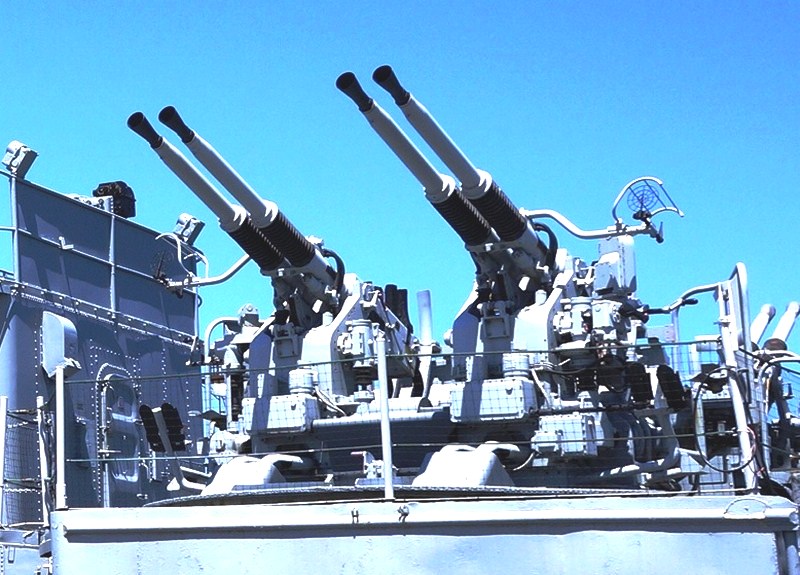
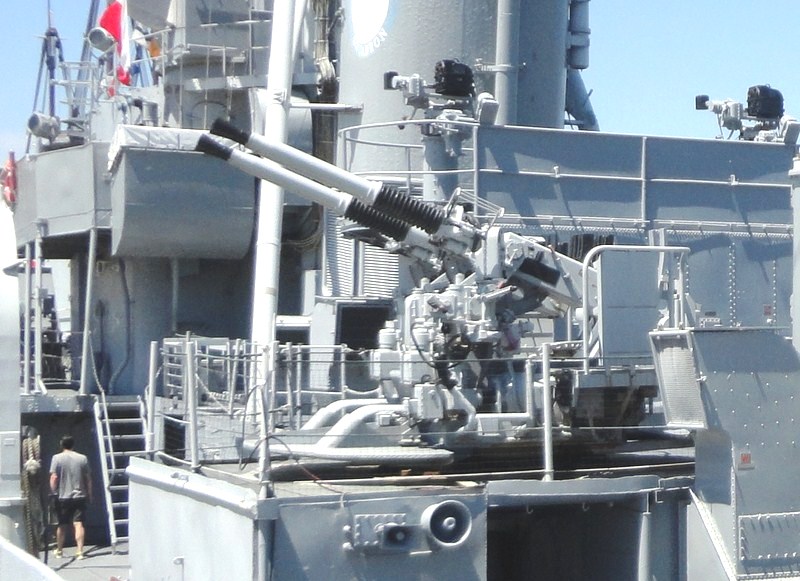

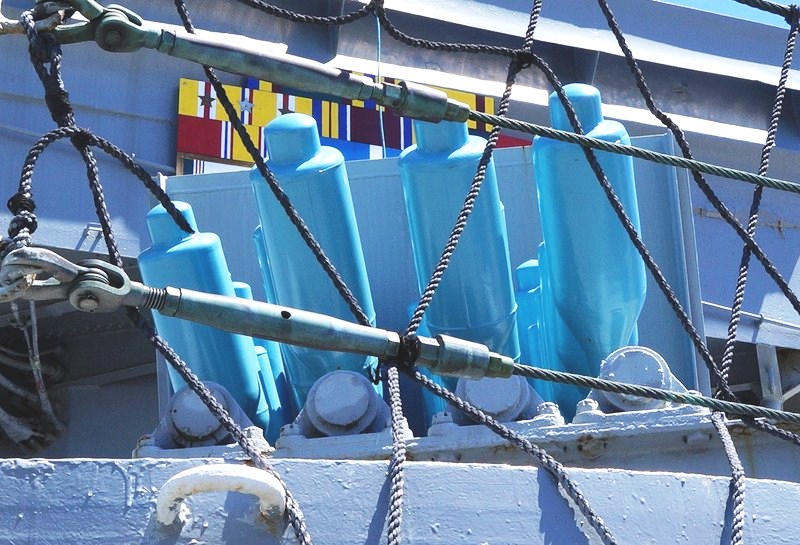
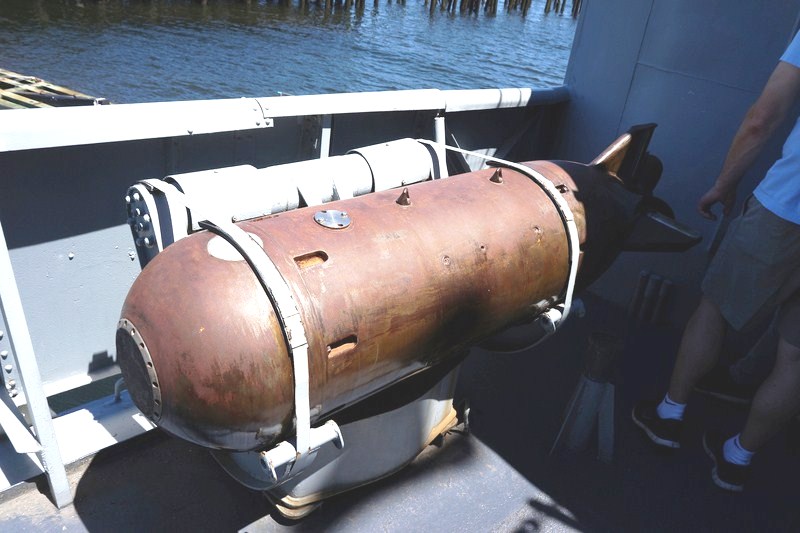
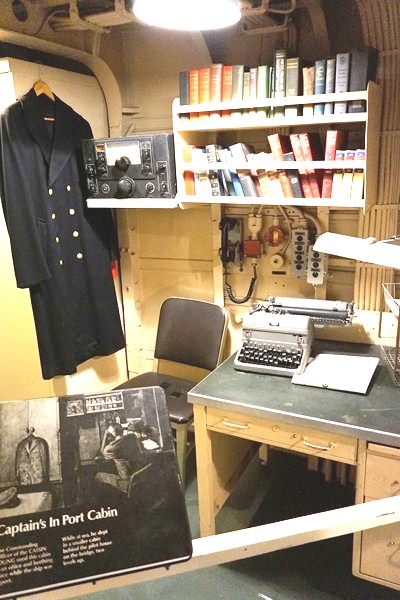


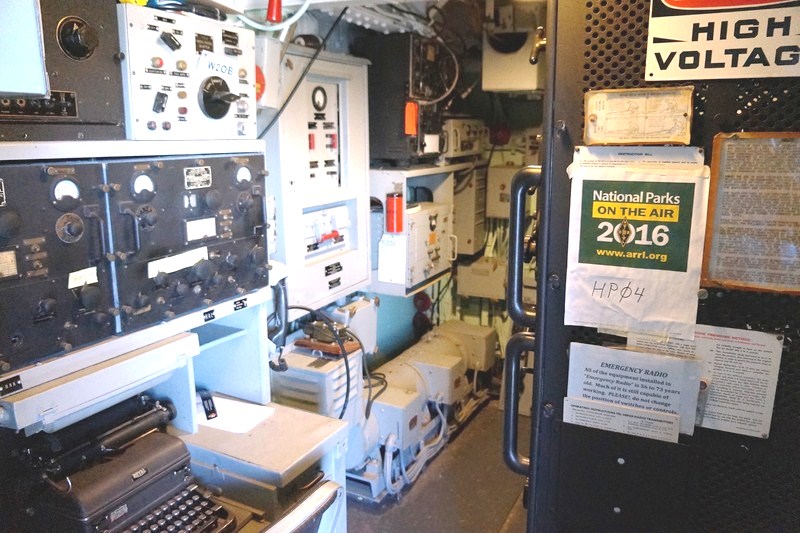

Pingback: The USS Constitution – Old Ironsides (Boston, Massachusetts, USA) – B.L.A.S.T. – Live Life to the Fullest ……… Don't Stay Put